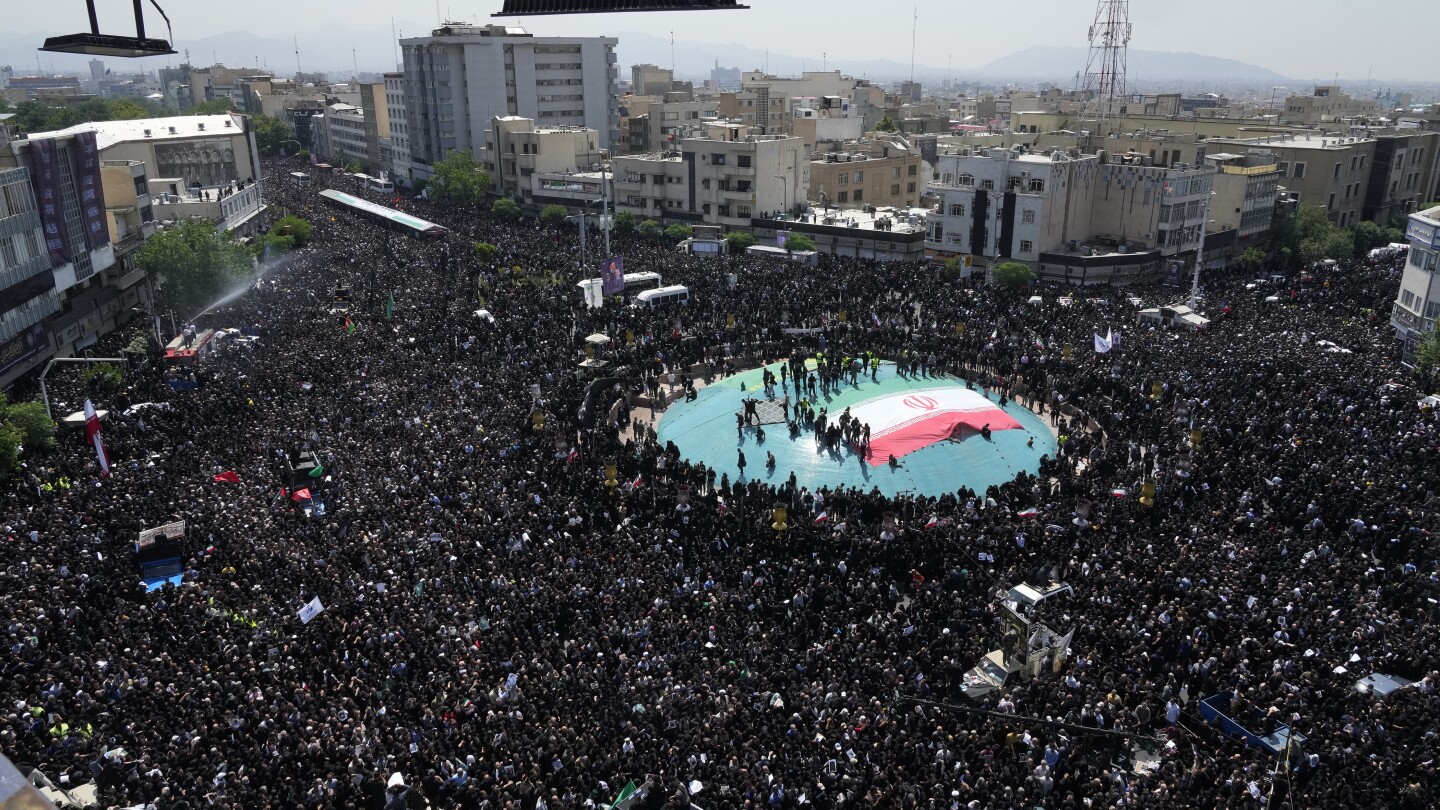DUBAI, United Arab Emirates (AP) — Iran on Thursday prepared to inter its late president at the holiest site for Shiite Muslims in the Islamic Republic, a final sign of respect for a protégé of Iran’s supreme leader killed in a helicopter crash earlier this week.
President Ebrahim Raisi’s burial at the Imam Reza Shrine in Mashhad caps days of processionals through much of Iran, seeking to bolster the country’s theocracy after the crash killing him, the country’s foreign minister and six others.
However, the services have not drawn the same crowd as those who gathered for services for Revolutionary Guard Gen. Qassem Soleimani in 2020, slain by a U.S. drone strike in Baghdad.
It’s a potential sign of the public’s feelings about Raisi’s presidency that saw the government harshly crack down on all dissent during protests over the 2022 death of Mahsa Amini, detained for allegedly not wearing her mandatory headscarf to authorities’ liking.
That crackdown, as well as Iran’s struggling economy, have gone unmentioned in the hours of coverage provided by state television and in newspapers. Also never discussed was Raisi’s involved in the mass execution of an estimated 5,000 dissidents at the end of the Iran-Iraq war.
Prosecutors have warned people against showing any public signs of celebrating Raisi’s death and a heavy security force presence has been seen in Tehran since the crash.
Thursday morning, thousands in black gathered along a main boulevard in the city of Birjand, Raisi’s hometown in Iran’s South Khorasan province along the Afghan border. A semitruck bore his casket down the street, with mourners reached out to touch it and tossing scarves and other items to be placed against it for a blessing. A sign on the truck read: “This is the shrine.”
Later, Raisi will be buried at the Imam Reza Shrine, where Shiite Islam’s 8th imam is buried. The region long has been associated with Shiite pilgrimmage. A hadith attributed to Islam’s Prophet Mohammad says anyone with sorrow or sin will be relieved through visiting there.
In 2016, Supreme Leader Ayatollah Khamenei appointed Raisi to run the Imam Reza charity foundation, which manages a vast conglomerate of businesses and endowments in Iran, as well as oversees the shrine. It is one of many bonyads, or charitable foundations, fueled by donations or assets seized after Iran’s 1979 Islamic Revolution.
These foundations offer no public accounting of their spending and answer only to Iran’s supreme leader. The Imam Reza charity, known as “Astan-e Quds-e Razavi” in Farsi, is believed to be one of the biggest in the country. Analysts estimate its worth at tens of billions of dollars as it owns almost half the land in Mashhad, Iran’s second-largest city.
Raisi will be the first top politician in the country to be buried at the shrine, which represents a major honor for the cleric.
The death of Raisi, Foreign Minister Hossein Amirabdollahian and six others in the crash on Sunday comes at a politically sensitive moment for Iran, both at home and abroad.
Raisi, who was 63, had been discussed as a possible successor to Iran’s supreme leader, the 85-year-old Khamenei. None of Iran’s living past presidents — other than Khamenei, who was president from 1981 until 1989 — could be seen in state television footage of Wednesday’s prayers. The authorities gave no explanation for their apparent absence.
Iran has set June 28 as the next presidential election. For now, there’s no clear favorite for the position among Iran’s political elite — particularly no one who is a Shiite cleric, like Raisi. Acting President Mohammad Mokhber, a relatively unknown first vice president until Sunday’s crash, has stepped into his role and even attended a meeting between Khamenei and Hamas leader Ismail Haniyeh on Wednesday.
___
Associated Press writer Amir Vahdat in Tehran, Iran, contributed to this report.

